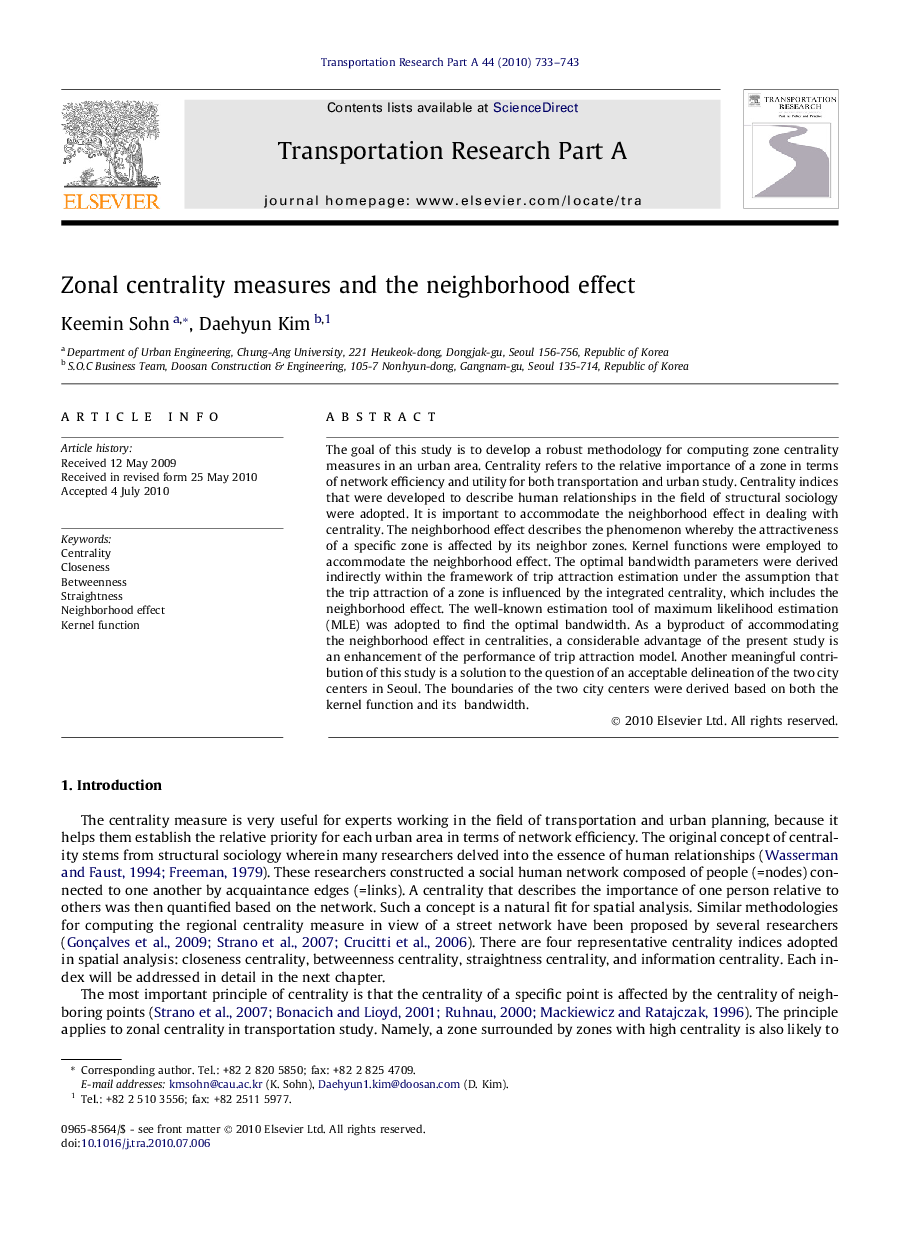| Article ID | Journal | Published Year | Pages | File Type |
|---|---|---|---|---|
| 310504 | Transportation Research Part A: Policy and Practice | 2010 | 11 Pages |
The goal of this study is to develop a robust methodology for computing zone centrality measures in an urban area. Centrality refers to the relative importance of a zone in terms of network efficiency and utility for both transportation and urban study. Centrality indices that were developed to describe human relationships in the field of structural sociology were adopted. It is important to accommodate the neighborhood effect in dealing with centrality. The neighborhood effect describes the phenomenon whereby the attractiveness of a specific zone is affected by its neighbor zones. Kernel functions were employed to accommodate the neighborhood effect. The optimal bandwidth parameters were derived indirectly within the framework of trip attraction estimation under the assumption that the trip attraction of a zone is influenced by the integrated centrality, which includes the neighborhood effect. The well-known estimation tool of maximum likelihood estimation (MLE) was adopted to find the optimal bandwidth. As a byproduct of accommodating the neighborhood effect in centralities, a considerable advantage of the present study is an enhancement of the performance of trip attraction model. Another meaningful contribution of this study is a solution to the question of an acceptable delineation of the two city centers in Seoul. The boundaries of the two city centers were derived based on both the kernel function and its bandwidth.
